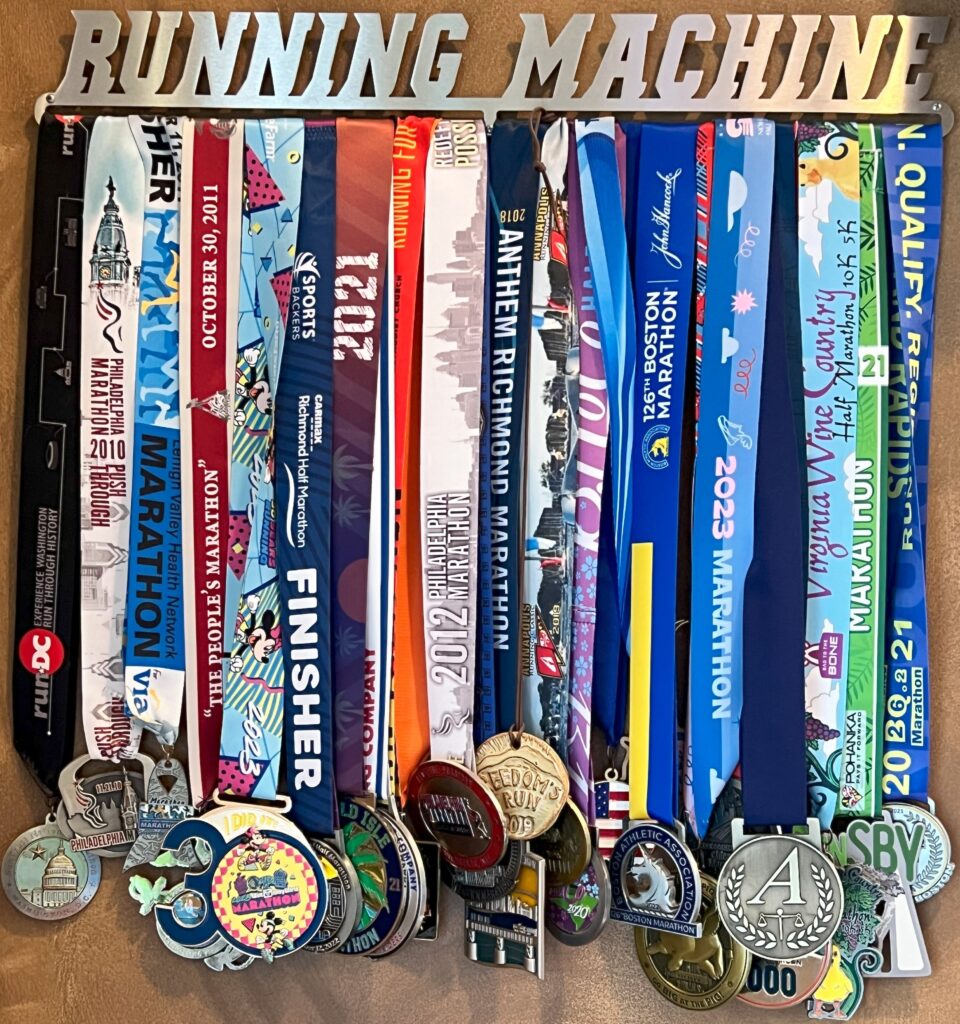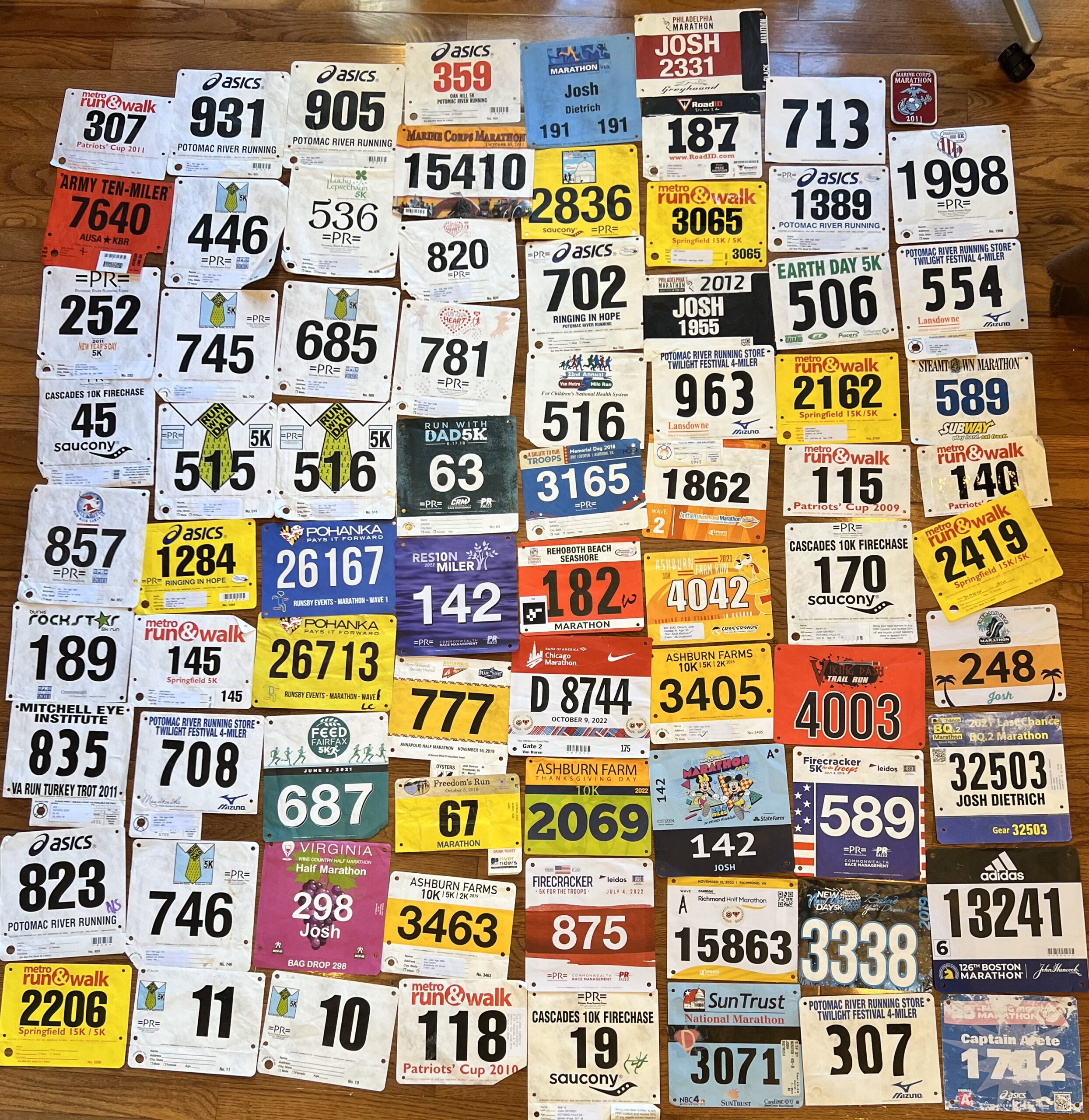Earlier this year, I wrote about neuroplasticity—our brain’s ability to form new neural connections throughout life, enabling us to create new habits and shed old ones. I’d like to share my running journey as an example. I encourage you to consider what parallels in your life are illuminated by this story. Perhaps it will inspire a shift in your way of being.
An Athlete is Born
It was 2008. I was promoted to Vice President of Software Development, joining the executive team and becoming the leader of a division I’d been a member of for over 15 years. As I stood before the division for the first time as their VP, I shared my personal story, including my values. One of those values was health. It struck me as I shared this that I wasn’t embodying this value. I didn’t consider myself unhealthy, but my health could improve. In particular, I didn’t engage in regular exercise. And so I decided to become a runner.
My favorite metaphor for neuroplasticity is creating a path between two towns where none existed. My first attempts to run were like blazing a trail for the first time. There were countless barriers to becoming a runner. I had to get the appropriate gear, adjust my schedule to make time for running, and accept that I was slow and couldn’t run very far.
I went to a workshop on heart rate training zones and decided to keep my heart rate in zone 2, which is considered the best zone to burn fat. To my horror, I had to walk to stay in zone 2. Even a very slow jog pushed me into zone 3. After a routine physical that week, my doctor’s office called.* My bloodwork revealed I had almost no iron in my body.
The iron supplements were, as my doctor described them, legalized blood doping. I watched as my pace improved while my heart rate stayed low. Getting iron into my system was a game-changer for my running.
Beyond the gift of iron, several other key factors helped me blaze my running trail.
Learning to run provided novelty, which fulfilled my core value of learning and growth. I got tremendous fulfillment from learning everything I could about running, getting the right gear, and tracking my successes.
I had personal relevance. Becoming a runner was a vehicle to embodying my value of health, which was critical to me as a senior leader. I was inspired to be a role model for my team.
Perhaps most important were my running relationships. I had several close friends at work who were runners, and they became regular companions for lunchtime runs. Having running buddies helped inspire me to get out and run.
My neuroplasticity running path evolved from a trail through the woods to a dirt road to a six-lane divided highway. By 2022, I had run the Boston Marathon and had training plans that maxed out at 75 miles a week. I wasn’t just a runner; I was an elite athlete and had my sights set on a sub-3-hour marathon.
The Unwinding of an Athlete
In the spring of 2023, I ran my fastest marathon ever. That summer, I trained for a fall marathon, aiming to improve my personal best. In September, on a long run, I had a breakdown. It was hot, I was tired, and running hard for 23 miles was too much for me mentally. I cut the run short and began considering adjustments to my training plan.
It was as if my body was waiting for my brain to throw in the towel. As I cut back on the miles, my body had its own breakdown. Heel pain became acute enough that I stopped running entirely until I could see a podiatrist and understand the root cause. I went from planning to run my fall marathon at a more manageable pace to canceling it entirely as I healed my heel.
Not running at all was challenging emotionally. Running was so deeply ingrained in me that my spirit struggled with the gap. Alternatives like the elliptical machine or a rower did not suffice. I remember looking out the hotel window on a trip to Chicago and yearning to run along the lake.
When I finally resumed running, however, something had shifted. I was delighted to be running again, but I found I had no desire to run another race. Competing suddenly seemed meaningless to me. I was signed up for the Big Sur marathon in Spring 2024, but as the date approached, I realized I had no desire to spend the time and money flying across the country to compete in a race. Seeing Big Sur sounded beautiful, but would I appreciate it while running 26 miles?
I was tearing down the super-highway I’d built up over 15 years. Perhaps a more appropriate metaphor is I got off the interstate and started taking the back roads. I’ve been unwinding for a year now, and it’s been remarkable to see all of the behaviors I built up to support an elite athlete’s way of being, which I can now let go of:
- I retired my running plan, which would map out runs for months in advance.
- I began to embrace trail running, something I avoided when competing for fear of injury.
- I let go of the weekly review ritual of planning each run for the upcoming week.
- I stopped bringing fuel on runs because I wasn’t running far enough to need it.
- Gradually, I retired various stretches designed to keep injury at bay.
- It became ok to stop mid-run to appreciate nature. I have made a regular practice of visiting my neighborhood Turtles in the middle of my run.
- I’m gradually accepting the need to change my eating habits since I burn fewer calories.
These are just a few of the myriad shifts in my way of being as I transition from running competitively to running for physical and mental health. The Council of Joshes has even discussed whether Athlete Josh needs to rebrand. For now, they have agreed to keep the branding. When I embody Athlete Josh, I channel more than just the ability to run competitively. I tap into focus and discipline. I’m not ready to let go of those talents.
If you’ve met with me on Zoom, you’ve probably noticed the running medals on the wall of my office. They serve as a wonderful conversation piece. Those medals embody Athlete Josh. They are a visual reminder of what I have accomplished. When I was racing, they also served as inspiration. They represented who I was becoming as I trained to add more medals.

Today, looking at those medals is like looking in the rear-view mirror. They remind me of who I have been, but they no longer represent who I am today or who I am becoming. So today, the medals come down, creating space for something new.
Putting It Into Practice
Neuroplasticity can help us develop a new habit or behavior, and it can help us remove an old one.
- What’s the parallel to my running journey in your life?
- Is it time to unwind something that no longer represents who you are today?
- Is there something new you want to create? Something you are becoming?
I am an executive coach and life coach with software executive roots in higher education and EdTech. I coach because I love to help others accelerate their growth as leaders and humans. I frequently write about #management, #leadership, #coaching, #neuroscience, and #arete.
If you would like to learn more, schedule time with me.
Want to comment? Join the conversation on LinkedIn.
* I remember this call vividly. The doctor’s office called and said, “Your doctor would like to see you in her office tomorrow at 2:00.” They offered no other explanation.

